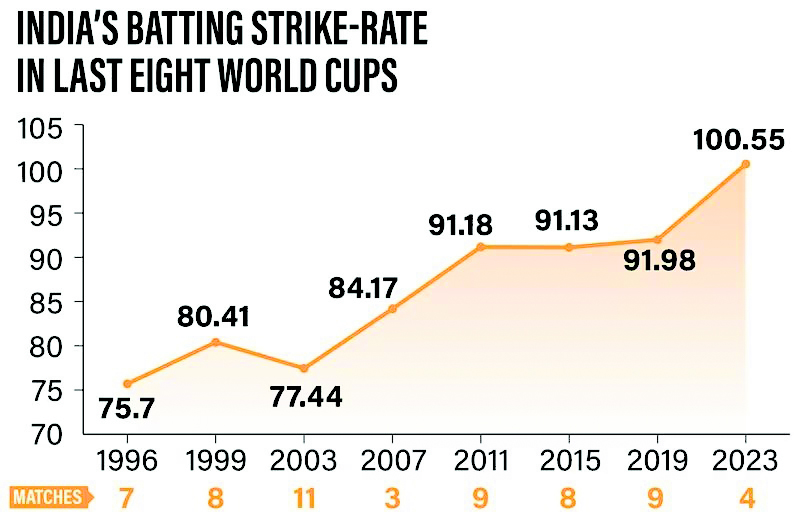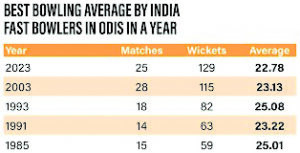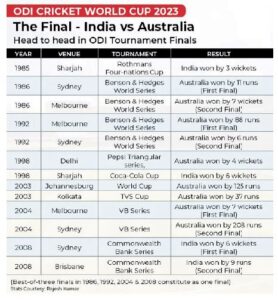

The ICC ODI Cricket World Cup, established 48 years ago, has witnessed remarkable transformations since its inception. Initially adhering to a 60-over format, teams exclusively donned whites while playing. However, significant alterations, such as the reduction of overs to 50 and the introduction of colored kits adorned with jersey numbers, have revolutionized the sport’s presentation. This evolution, fueled by technological advancements and global fan demands, has reshaped cricket’s landscape, yet the historical documentation or living eyewitnesses stand as the testimony to its journey over the years.
Ahead of the much-anticipated final clash between India and Australia on Sunday, November 19, at the Narendra Modi Stadium in Ahmedabad, the spotlight falls on which team will exhibit the resilience needed to secure their third or sixth ODI World Cup victory.
The 2011 Cricket World Cup, jointly hosted by India, Sri Lanka, and Bangladesh, etched its mark in history by featuring an all-Asian final clash between India and Sri Lanka, a first in tournament history. With a total of 14 teams divided into two groups of seven, the battle for quarter-final berths was intense and gripping.
India’s journey to glory in this edition was nothing short of a roller-coaster ride. Despite setbacks, including losses to South Africa and a tied match against England during the group stages, India showcased resilience and determination. They surged ahead, knocking out formidable opponents on their path to the championship.
Their remarkable journey culminated in a compelling quarter-final victory against Australia, followed by a tense semi-final win against arch-rivals Pakistan. In a gripping final showdown against Sri Lanka, India emerged triumphant, claiming their second World Cup title with a convincing six-wicket win.
The victorious campaign was marked by exceptional performances from key players. MS Dhoni’s composed leadership at the helm, Yuvraj Singh’s match-winning contributions with both bat and ball, and the crucial breakthroughs by Zaheer Khan were pivotal in steering India towards their glorious title-winning run.
The 2011 World Cup victory stands as a testament to India’s resilience and excellence on the cricketing stage.
Reflecting on cricket’s evolution over the last five decades, a significant turning point occurred with the inaugural One Day International (ODI) played between England and Australia in Melbourne on January 5, 1971. Two years later, the International Cricket Council (ICC), previously known as the International Cricket Conference, hosted the maiden men’s Cricket World Cup in 1975.
Since then, a total of 12 editions of the ODI World Cups have captivated cricket enthusiasts worldwide. Australia leads the tally with five prestigious trophies, while West Indies and India have clinched two titles each. Completing the list of ODI World Cup champions are Pakistan, Sri Lanka, and England, each securing the coveted trophy on one occasion.
















